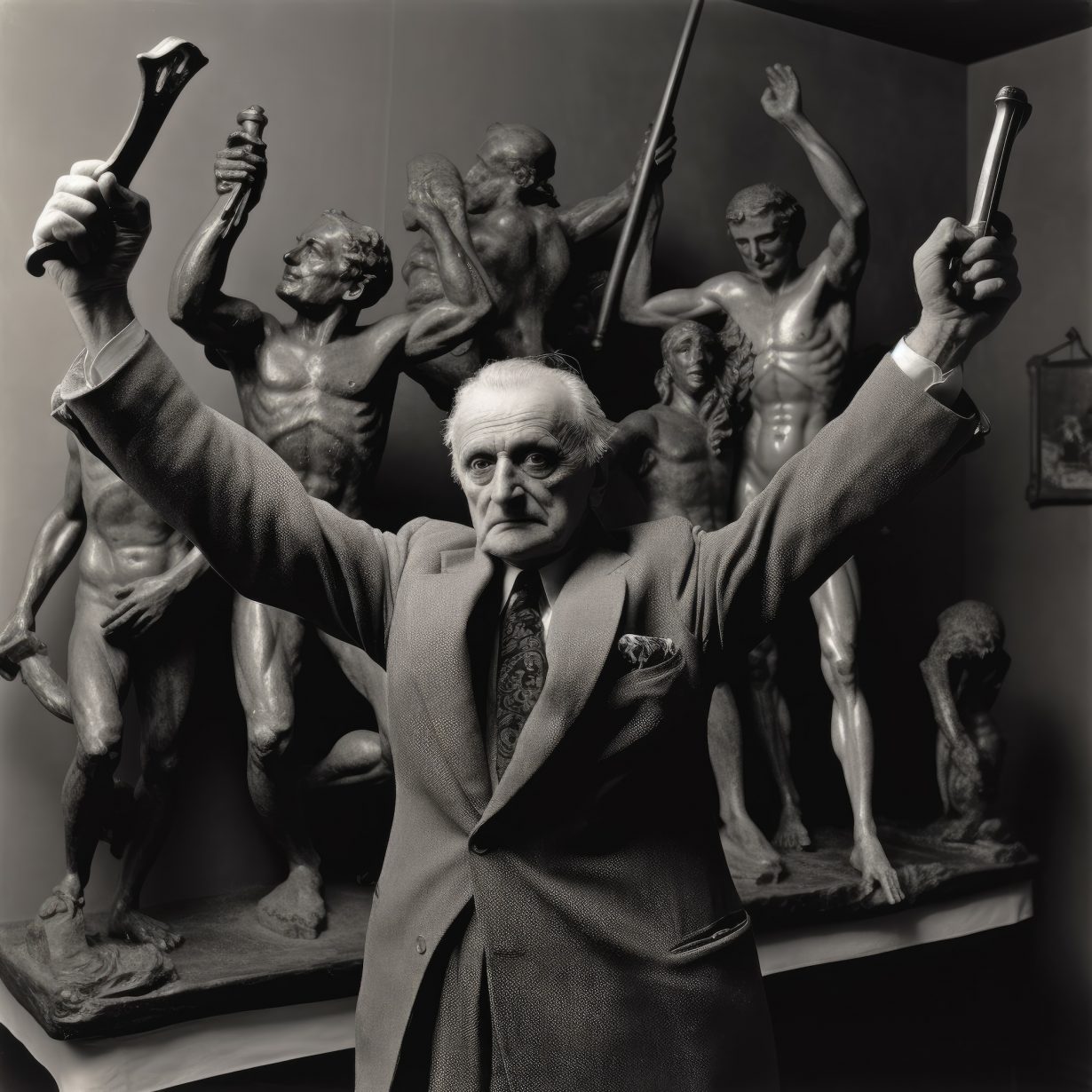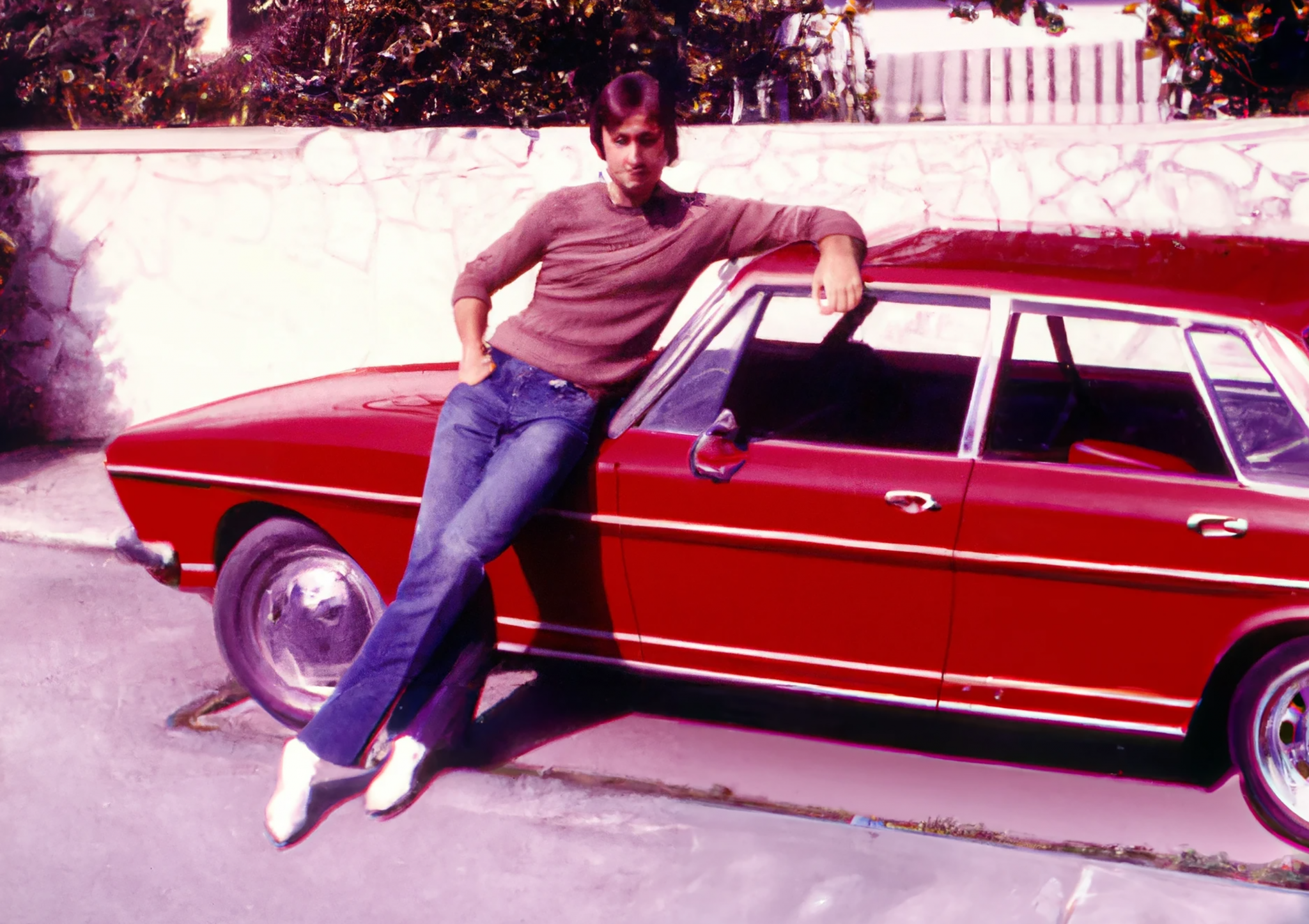From AI-generated ‘promptography’ to dreamy sci-fi images, what constitutes truth when it comes to photography today?
A declarative title sets the stage for a group show that’s concerned with age-old debates about photographic truth. And sure enough, Photography Never Lies wades straight into the most topical of them: mounted on a wall near the entrance is the AI-generated image that, in 2023, won a Sony World Photography Award – until its creator, German photographer Boris Eldagsen, declined the prize on the grounds that his image isn’t ‘a real photograph’. The Electrician (2022), a black-and white, vintage-looking portrait of a woman cradling another woman from behind, replete with filmlike streaks of leaking light, is one of 19 images shown here from Pseudomnesia (2022–), a series that Eldagsen creates by typing prompts into OpenAI’s text-to-image generator dall-e 2. Hung salon-style, these are disquieting images with a Roger Ballen esque feel: a woman surrounded by ghoulish faces stirs during an experiment (Decision-making for Beginners, 2023); a man presses a daggerlike contraption against his body, as if duty-bound to self-harm (The Memory, 2023).
Eldagsen submitted The Electrician to see if the Sony judges could identify how it had been created, as well as to spur a public conversation about the proliferation of AI-generated images. ‘Promptography learnt its look from photography, but it’s different at the same time,’ he told the BBC, deploying a neologism for AI imagery. ‘Do we want to put it into one basket? Or would it be a mistake?’ Photography Never Lies, while setting out to challenge the belief that ‘photography is a tool that most straightforwardly reflects reality’ through the work of 13 artists, draws us into this debate: it is one big, heaving basket wherein photorealistic AI-generated images and photo based art practices compete – sometimes jarringly, sometimes fruitfully.
Nearby is a luminous suite of mixed-media prints by Greek artist Ioanna Sakellaraki: images of moonlit sea rocks, giant oystershells and oceans frothing with pearls, among other oneiric maritime-themed visions drawing heavily on archival sources. Like Pseudomnesia (which was spurred by Eldagsen’s discovery of old photos owned by his father, a German soldier in the Second World War), The Seven Circuits of a Pearl (2023) is a visual study triggered by a family connection, namely the seafaring experiences of Sakellaraki’s late father.

Moving through the space, you encounter a less cohesive hotchpotch of works, from dreamy sci-fi images of East Asian people in supernaturally tinged urban or rural settings (Napasraphee Apaiwong’s Resonances of the Concealed, 2023) to 36 black-and-white headshots of men (Patrik Budenz and Birte Zellentin’s macht, 2023). Approaching the latter, I recognise some of the faces as past heads of state – Castro, Gaddafi, Mao, etc. Totalling 199 images, the macht series comprises one portrait per country, each created by digitally layering individual headshots of all its different leaders between 1921 and 2021 (“one year in power is one percent of visibility,” Budenz explained at a panel talk). The result is a stark visualisation of the heterogeneity of global political power: Stalin’s features recur in several images, for example, while other portraits are indistinct amalgams of shorter-serving democratic leaders.
Categorically determining what is AI-generated (such as Aphaiwong’s series) and what is not (such as Budenz and Zellentin’s) can only be done by scouring the catalogue or the wall labels’ miniscule fine print; evidently, curator Akkara Naktamna wants the audience to look first and read second – to trawl these images without prejudice in search of critical differences or commonalities. One question that arises from this approach is: Isn’t Naktamna, by presenting AI imagery under a ‘photography’ banner, tacitly advocating for the dissolution of any distinction? And another is more sanguine: couldn’t ‘promptography’ potentially do some of the biographical storytelling and unlocking of memory that the photograph does, or did?
At the show’s midpoint, Leslie Shang Zhefeng’s Cypress Slope (2020), a photographic pilgrimage across four generations of the artist’s family in northwest China, sits across from Maria Mavropoulou’s Imagined Images (2022–23), a series of what appear to be old family photos taken in the Mediterranean. The latter are clearly the AI contribution here: the faces of those depicted are lopsided, blurry, uncanny. And yet these portraits and candid moments are at the same time so cosy, so domestic, that looking at them almost feels intrusive. Later, a glance at the catalogue reveals why. An absence of photos of her grandparents or childhood led Mavropoulou to key into an image generator memories and stories relayed by her relatives. Whether these mendacious yet strangely poignant images belong on a gallery wall or a mantelpiece – and whether or not they possess a kernel of truth that validates their inclusion here – are just some of the ethical and real-world questions this exhibition leaves hanging.
Photography Never Lies at Bangkok Art and Culture Centre, 30 May – 8 September
